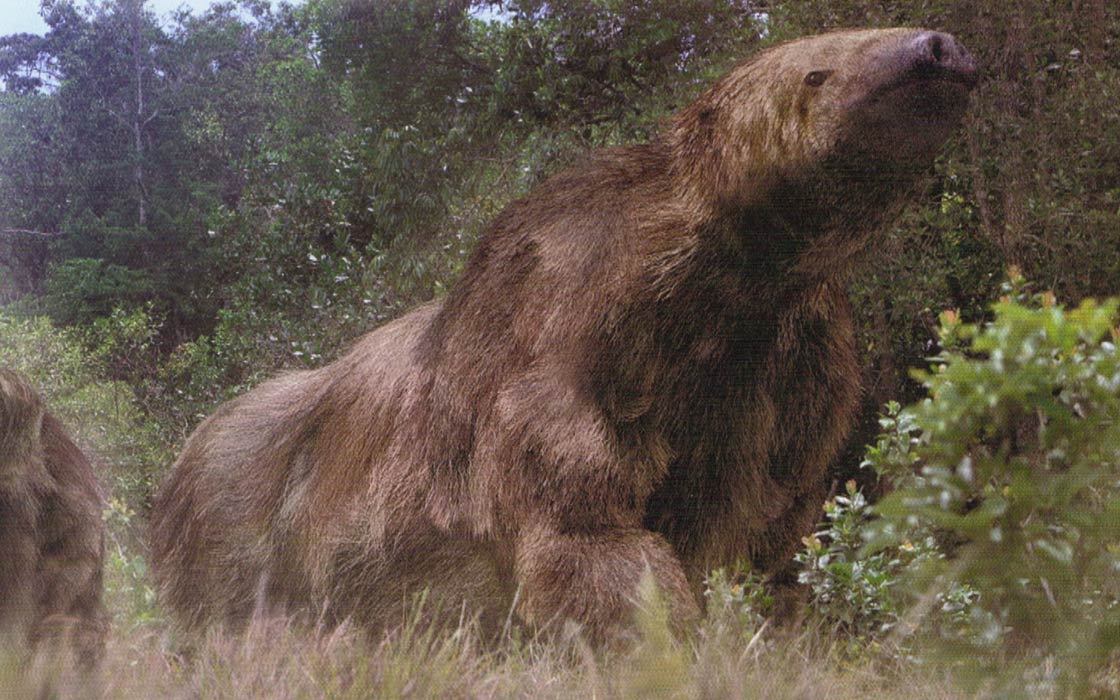
It was taken from the famous Mylodon Cave in Chile, which derives its name from the numerous remains of ground sloths found inside. Scientists say the sample was exceptionally well-preserved. “This means tree-living evolved independently, twice, which is remarkable.” DeGroote Institute for Infectious Disease Research. “Our study confirms the convergent evolution of the two, tree dwelling modern sloths from two distinct lineages of extinct giant ground sloths,” says Hendrik Poinar, a lead author of the study and director of the McMaster Ancient DNA Centre and principal investigator at the Michael G.

The much smaller, modern sloth evolved over time to inhabit trees, where it spends virtually its entire life suspended upside down. The research, published online in the Proceedings of the Royal Society B, suggests the two species diverged from one another approximately 22 million years ago. The analysis, they say, proves for the first time that the giant ground sloth–which went extinct approximately 10,000 years ago–is a close relative of the modern two-fingered sloth, believed to be one of the world’s slowest mammals. Using a bone fragment which dates back nearly 13,000 years, scientists teased out and reconstructed DNA fragments to obtain a high-quality mitochondrial genome and nuclear genomic information. Researchers have uncovered important genomic data from the remains of an ancient giant ground sloth, or Mylodon darwinii, the emblematic creature named after Charles Darwin, whose discovery of fossilized remains in South America is considered to be one of his significant scientific achievements.

Credit: Walter Ferry Dissmann (Creative Commons) Darwin’s ground sloth, the researchers add, may have filled a vacant ecological niche: the scavenger who wouldn’t say no to a meaty meal.This is the Mylodon cave in which the bone analyzed by researchers was collected. And that might help solve a long-standing puzzle: the apparent absence of large carnivorous mammals in South America at the time. That’s in part because all six modern species of sloth are confirmed vegetarians, and in part giant ground sloths’ teeth and jaws weren’t adapted for hunting or powerful chewing and tearing ( SN: 6/20/16).īut Darwin’s ground sloth could have managed to ingest already-killed meat, Tejada and colleagues say. Scientists have assumed the ancient creatures were herbivores. The findings upend what scientists thought they knew about the ancient animals. The data reveal that while the diet of the Shasta ground slothwas exclusively plant-based, Darwin’s ground sloth was an omnivore, Tejada and colleagues report October 7 in Scientific Reports. By comparing the nitrogen isotopes in the two amino acids found in the sloths’ hair, the researchers were able to eliminate ecosystem effects and zoom in on diets.

But diet has little impact on the nitrogen values in another amino acid, phenylalanine. Those isotope values in one amino acid, glutamine, change significantly with diet, increasing the higher the animal is on the food chain.

Nitrogen isotopes, different forms of the element, can vary a lot among different food sources as well as between ecosystems.


 0 kommentar(er)
0 kommentar(er)
